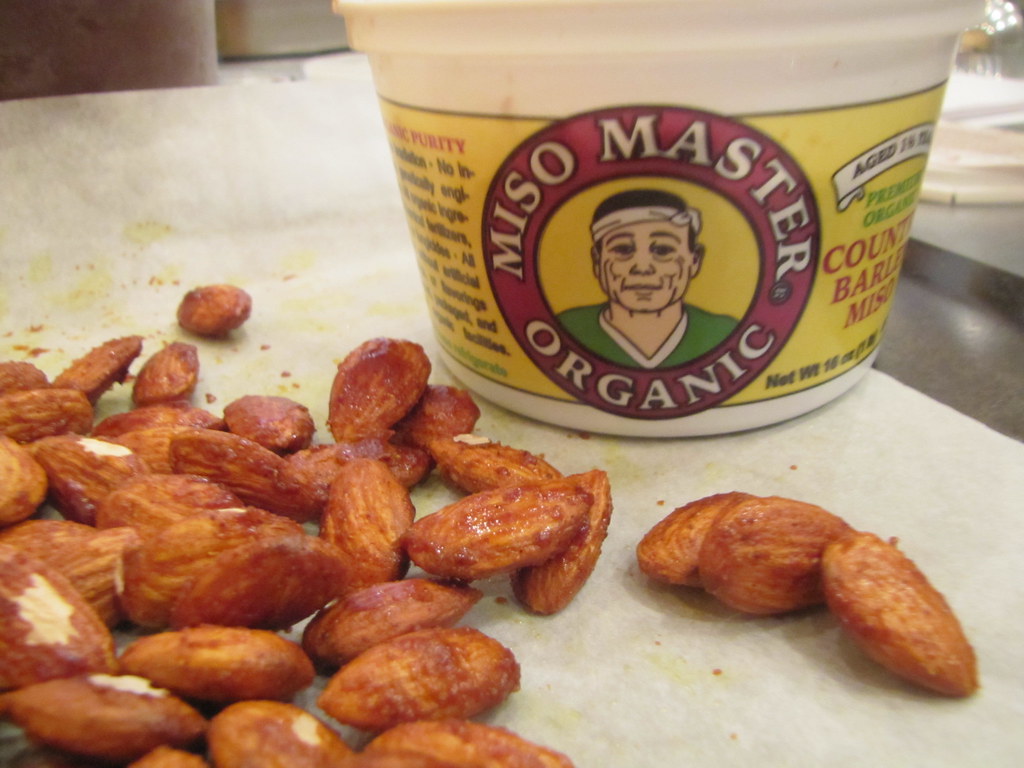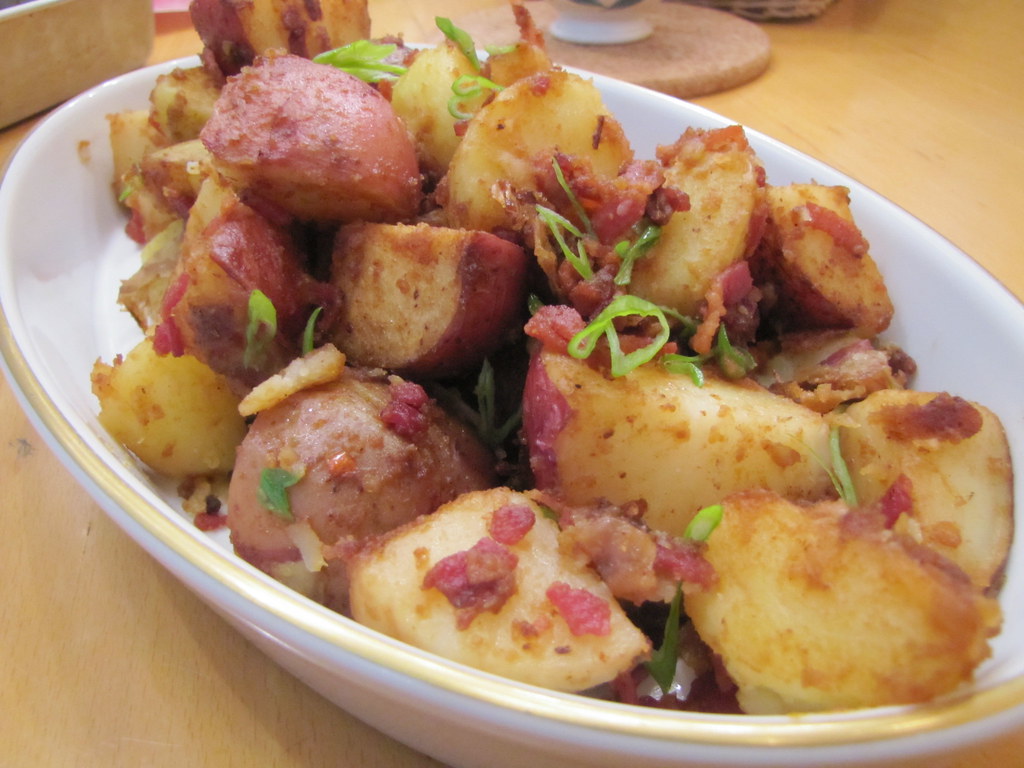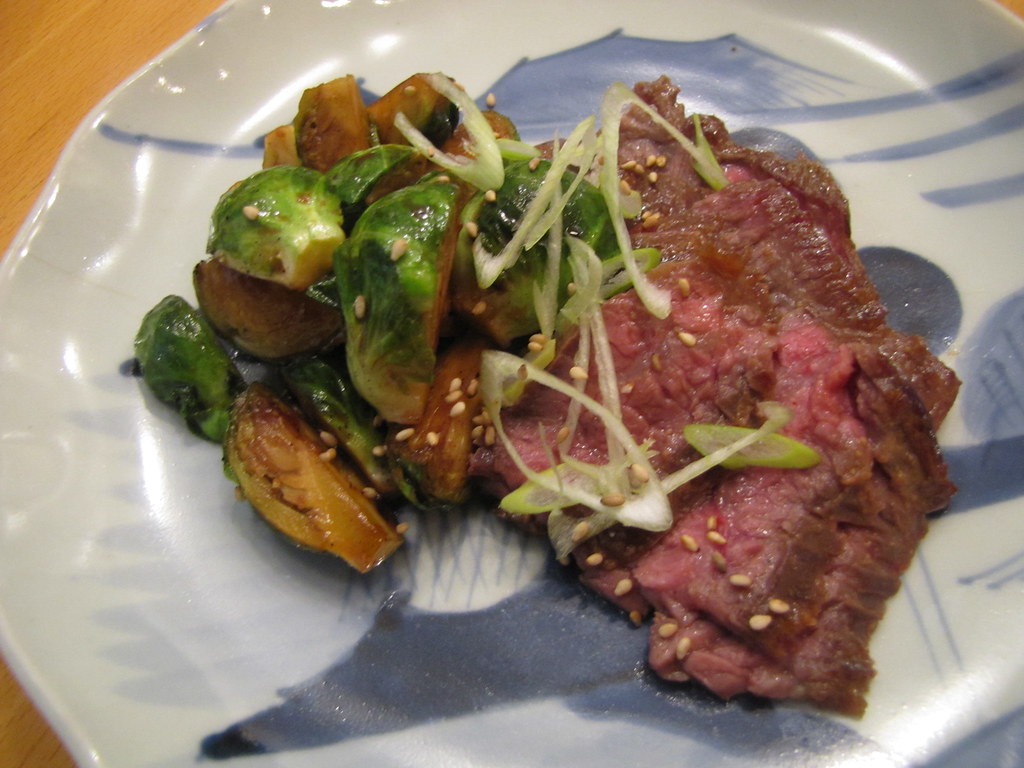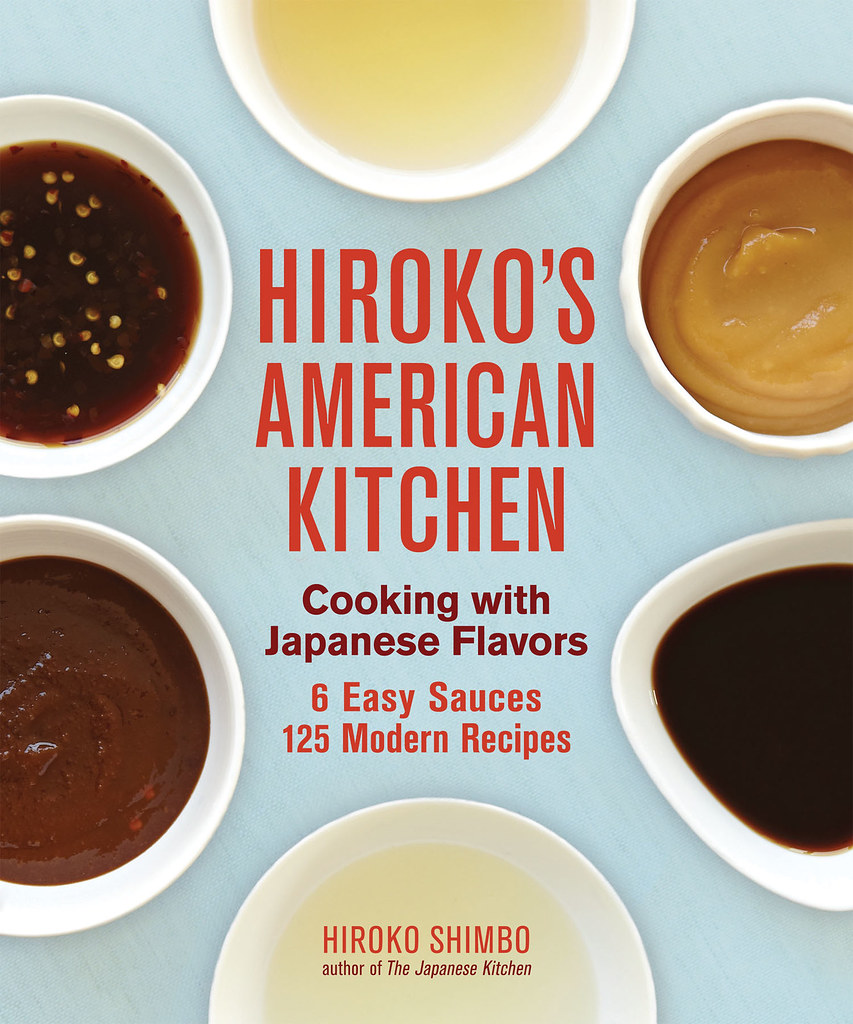It is humbling to enter the home of a world-renowned authority on food such as Hiroko Shimbo. The week before Thanksgiving, I was listening to WNYC and heard the author, chef and food consultant chime in about how the Japanese squash variety kabocha was an excellent choice for making “pumpkin” pie from scratch, for its sweet, nutty flavor and creamy texture. Two weeks later, thanks to some generosity of her publicists, I was standing in her home kitchen in New York City, offering a strange-looking squash I’d picked up at Union Square Greenmarket on my way. (Never enter a chef’s lair without an edible gift, I say!) The reason for my visit was to try out some of the signature dishes she’s come up with for her third cookbook, an enlightening departure called Hiroko’s American Kitchen.
Doesn’t that just sound fabulous? A trained sushi chef, living in America for more than a decade, fashions a cuisine that’s full of surprising yet very sensible East-meets-West twists that’s all her own — that’s what this book essentially is. But it’s so enticing and approachable, you should try out each one of the recipes any day. Like the first food she presented me with: spicy brown miso-glazed roasted almonds, straight from the oven that she was still breaking apart gently by hand. I tried my first one, and it tasted better than any candied or glazed nut that I’ve had before. For the rest of the two or so hours that I lingered in her kitchen, watching more fascinating food unfold before me, I couldn’t stop snacking on those. (I’ve finagled the recipe for them at the bottom of this post, so you can gift a bag to your friends this holiday season!)
 Hiroko’s curried miso nuts, made with Miso Master miso paste
Hiroko’s curried miso nuts, made with Miso Master miso paste
Hiroko’s new book is focused around two stocks and four basic sauces that can work as marinades, seasonings, dressings, or whatever — glazings — and all the delicious dishes that can be made with them. It states what you need right from the start to make these sauces, and suggests all the places where they can go. The sourcing might require a trip to a well-stocked grocery store (you’ll need some miso paste, good soy sauce, sake and rice vinegar, etc.), but these ingredients can keep for practically an eternity once you have them. I can attest, as I have a fair amount of these basics stored away, and yesterday when I was reheating some leftover mashed potatoes, I decided to add a dab of white miso paste along with water to them (instead of more butter or chicken stock). It tasted miraculous! I have Hiroko to thank for the inspiration.
 frisee, celery root, and orange salad with spicy miso sauce dressing and glazed almonds
frisee, celery root, and orange salad with spicy miso sauce dressing and glazed almonds
I was also turned onto Hiroko’s emphasis on buying only high-quality, all-natural types of these ingredients, because they’re sometimes produced in a manner that belies their ages-old techniques nowadays. For instance, for the nuts, she used a miso paste produced by a company based in North Carolina, founded by hippie entrepreneurs who spent years in Japan learning from the miso masters at the time to produce quality pastes made the old-fashioned way. I’ve actually tried miso pastes from this company before (I’ve found them at my local Key Foods, of all places), and they taste about ten times better than some other brands that are less-expensive. Because of it, I tend to need much less to flavor my soups and whatnot, and I still have a tub of their red miso from two years ago in my fridge! Hiroko enlightened me further to add that you can keep miso paste in the freezer, which will retain its taste better and — thanks to the natural chemical compounds — the miso paste won’t harden, meaning you don’t even have to thaw it out.
 potatoes with bacon, scallions and spicy miso sauce
potatoes with bacon, scallions and spicy miso sauce
Over the course of our meeting, Hiroko made four recipes based around one sauce in the book: her spicy miso sauce. It’s essentially a loosened-up mixture of miso paste with some mirin, or seasoned rice vinegar, sake, lemon juice, sugar and a pinch of hot chili pepper flakes. Hence, it’s a little bit spicy, a little bit sweet, a little bit tangy, and especially savory. In addition to the nuts, she used the sauce to make a dressing for a frisee and orange salad, bacon and scallion-studded home-fried potatoes, seared Brussels sprouts, and marinated skirt steak. If that doesn’t sound good, in the book she goes on to make chicken wings and pork burgers with it, and that’s only one sauce from the book. (It was good.)
Hiroko says that her cooking style is rooted firmly in Japanese philosophies. “It makes me who I am — I had already the depth of Japanese food education and I am more Japanese than American” when it comes to food, she attested. Hiroko grew up in Japan and lived in Tokyo before moving to New York City thirteen years ago, and the culture there has shaped her vision on food. But, “I am blessed to have these two different worlds,” she said, of her American home and Japanese background. She, like some of the Chinese relatives of mine, says that she cannot really get into strong-tasting cheeses (I know I’ve said this before for myself on this blog) but that miso paste can be used like a hard, aged cheese for its umami presence: “It can be tossed into salads and foods for flavor and you’ll get more healthfulness,” said Hiroko.
 chopping scallions with a bias-cut for garnish
chopping scallions with a bias-cut for garnish
 the spicy miso sauce-marinated skirt steak and Brussels sprouts
the spicy miso sauce-marinated skirt steak and Brussels sprouts
One of the best pieces of advice I gleaned from Hiroko was that spiciness, something I absolutely adore on the other hand, was used very sparingly in Japanese cooking: “Because in Japanese cooking, we want to taste the individual flavor of the foods, so we don’t add too much salt or chili to overwhelm them.” The spicy miso sauce in her book is not too spicy, I must add, but simply awakens the palate with just a hint of chili. It was a revelation for me. With Brussels sprouts or steak, the mild note of heat really stood background to the good, bitter-sweet miniature cabbages that were the Brussels sprouts, or the rich, seared beef that was the skirt steak. Furthermore, Hiroko didn’t use any spice that was hard to attain for her spicy miso sauce; she used a pinch of red chili flakes, the kind you’ll find in pizza joints or grocery shelves anywhere. In Japan, the typical dried chili is a short and skinny red variety called togorashi. But you can use flakes of pretty much any medium-hot, dried chili in its place.
Well, I am blessed to have a new stock of sauces to flavor with thanks to Hiroko’s American Kitchen — which I experienced and hope to share with you. Here is that recipe for the glazed nuts that were so snackable, and just as easy to make in any home, from one shore to another.
Curried Miso Nuts (from Hiroko’s American Kitchen)
(makes 1 cup)
1 tablespoon Spicy Miso Sauce* (recipe just below)
1 tablespoon sugar
1/2 teaspoon sea salt
1 teaspoon Japanese curry powder or Madras curry powder
1/4 teaspoon hot paprika
1 teaspoon water
1 1/2 cups unsalted roasted peanuts, almonds, cashews, pecans, walnuts, whatever!
Preheat the oven to 250F degree. Place the Spicy Miso Sauce, sugar, salt, curry powder, paprika and water in a small bowl and mix until well blended. Add the peanuts and coat them with the miso sauce. Transfer the peanuts to a baking sheet and bake them in the oven for 40 minutes. Remove the peanuts from the oven, stir them, and return the peanuts to the oven for an additional 20 minutes. Let them cool on the baking sheet and then transfer them to a serving bowl.
You can make a large batch and freeze it for a later party!
*Spicy Miso Sauce
(makes 1 1/2 cups)
1 cup aged brown miso
1/2 cup plus 1 tablespoon sugar
3/4 cup mirin (sweet cooking wine)
1/4 cup plus 2 tablespoons sake (rice wine)
1/4 cup lemon juice
1 to 2 teaspoons red pepper flakes
Place the miso, sugar, mirin, and sake in a medium pot and whisk until smooth. Place the pot over medium heat and bring it to a simmer.
Cook the mixture, stirring constantly, for 4 to 5 minutes. Add the lemon juice and cook for 8 minutes, stirring occasionally. Turn off the heat, add the red pepper flakes, and stir. Transfer the sauce to a clean freezer container. Cover the jar with a lid and store it in the freezer.
Cost Calculator, Health Factor, and Green Factor respectfully omitted for guest recipes


4 Responses
daMiles Smith
Thank you so much for this. I was into this issue and tired to tinker around to check if its possible but couldnt get it done. Now that i have seen the way you https://mxplayer.pro/ did it, thanks guys
with
regards
ddaMiles Smith
Thanks for sharing.I found a lot https://www.ucbrowser.vip/ of interesting information here. A really good post, very thankful and hopeful that you will write many more posts like this one.
ddaMdiles Smith
I found a lot of interesting information https://mxplayer.pro/ here. A really good post, very thankful and hopeful that you will write many more posts like this one.
bhenmia0
I read this article! I hope you will continue to have such articles to share with everyone! thank you!